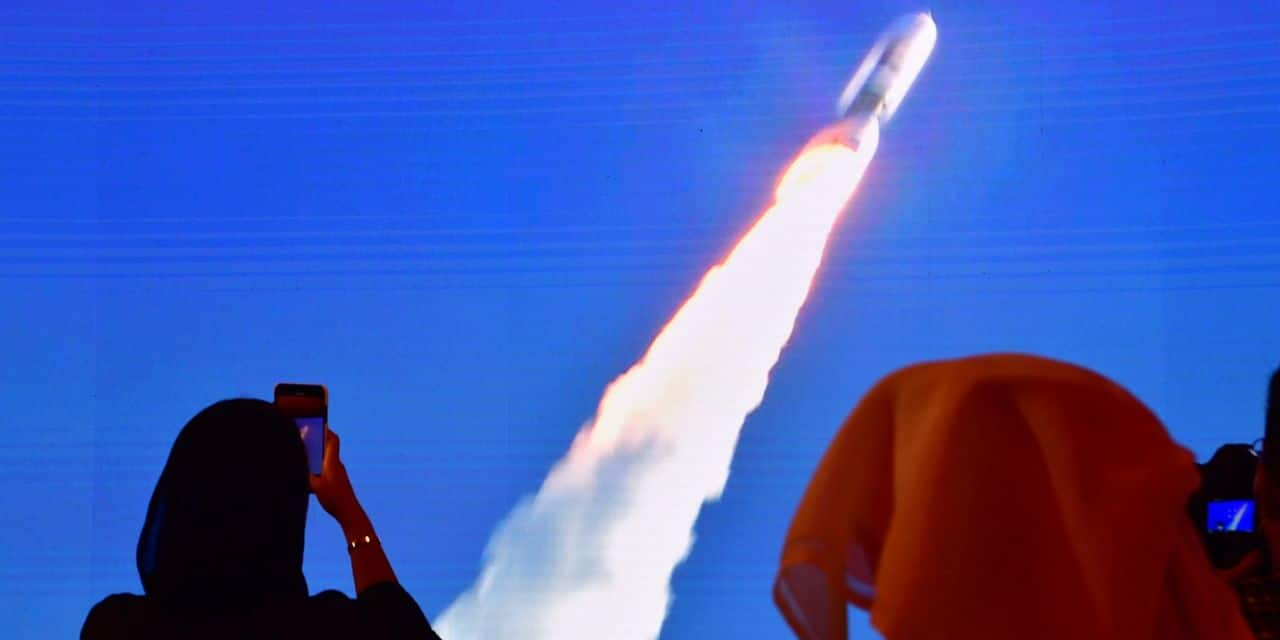Emirates’ Hope probe approaches Mars
“Al-Amal” (“Hope” in French and “Hope” in English), is led by the United Arab Emirates. It should provide a full picture of the temperature dynamics in the atmosphere of the Red Planet.
The take-off of this unmanned spacecraft took place in July from the Tanegashima space center (southwest of Japan), after two postponements due to bad weather.
The spatial ambitions of this oil-rich Gulf country are seen as reminiscent of the golden age of great cultural and scientific achievements in the Middle East. Here are some elements of understanding.
Multitude of projects
The federated state of seven emirates, including the capital Abu Dhabi and glitzy Dubai, has nine working satellites in orbit and plans to launch eight more in the coming years.
In September 2019, Hazza al-Mansouri was the first Emirati to be sent into space, aboard a Soyuz rocket, and the first Arab citizen to stay on the International Space Station.
The country’s ambitions go even further as it plans to build a human colony on Mars by 2117.
In the meantime, he plans to create a “science city” in the desert on the outskirts of Dubai to simulate Martian conditions and develop the technology needed to colonize the planet.
The Emirates are also considering mining and space tourism projects. They signed a memorandum of understanding with Virgin Galactic, the space tourism company of British billionaire Richard Branson.
The journey of “hope”
“Al-Amal”, the 1,350 kg probe, the size of a 4×4, will have taken seven months to cover the 493 million kilometers to Mars, in time to mark the 50th anniversary of the unification of the seven emirates .
The probe will remain in orbit for a whole Martian year, or 687 days.
This mission must study the atmosphere of Mars to “provide a first complete understanding” of its climatic variations over an entire year, said Sarah al-Amiri, at the time of the launch when she was deputy head of the project. She is currently the UAE’s Minister of Advanced Technologies and President of the country’s space agency.
Inspire youth
Three instruments attached to “Hope” will provide a complete picture of the atmosphere of Mars throughout the Martian year.
An infrared spectrometer will measure the lower atmosphere and analyze the temperature structure, a high-resolution imager will provide information on ozone levels, and an ultraviolet spectrometer will measure oxygen and hydrogen levels at a distance of up to 43,000 kilometers. the surface.
Understanding the atmospheres of other planets should lead to a better understanding of Earth’s climate, say those responsible for the space mission.
In a region shaken by conflict and plagued by economic difficulties, the project is also seen as a way to inspire an entire generation and remind them of the height of scientific advances in the Middle Ages.
“The Emirates wanted to send a strong message to Arab youth and remind them of the past, that we were once generators of knowledge,” said Omran Charaf, the mission’s project manager.
